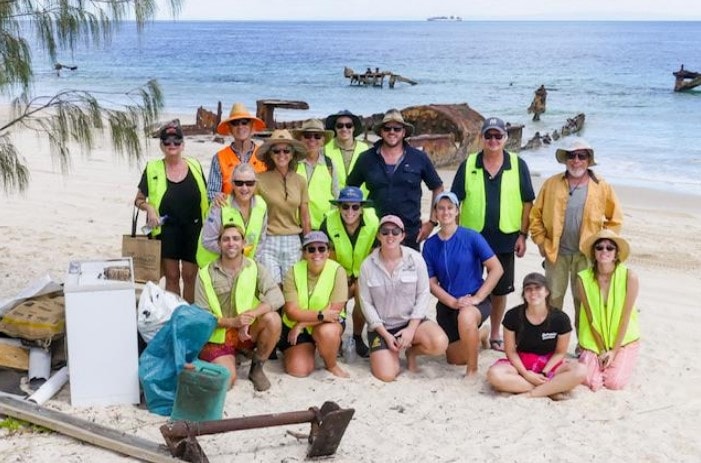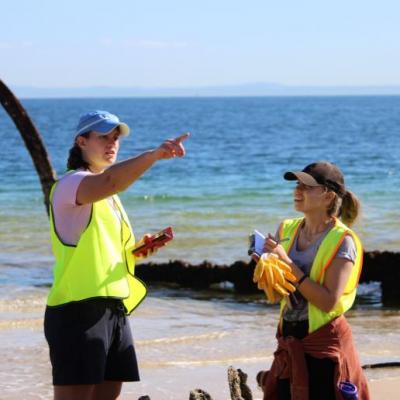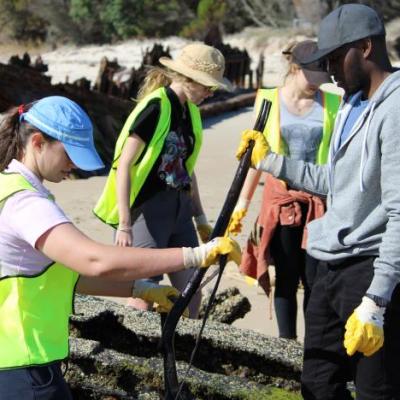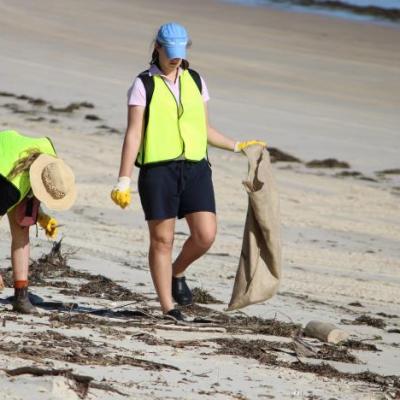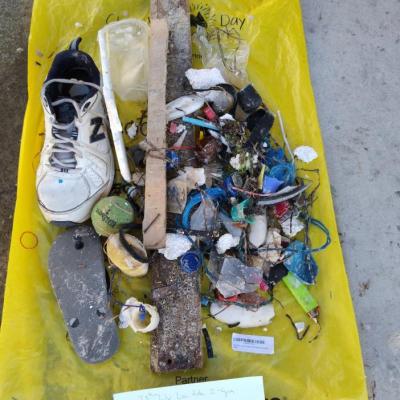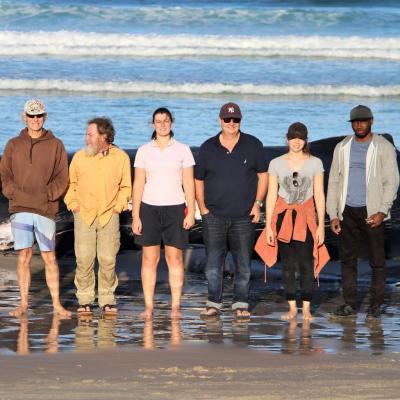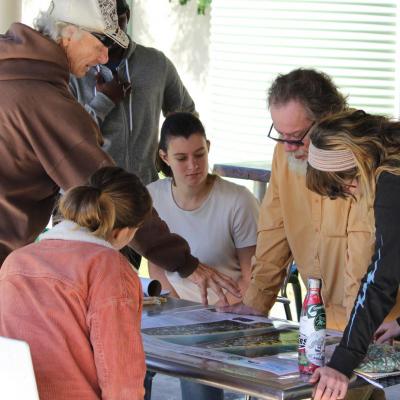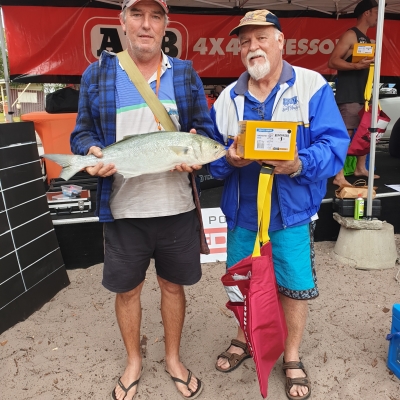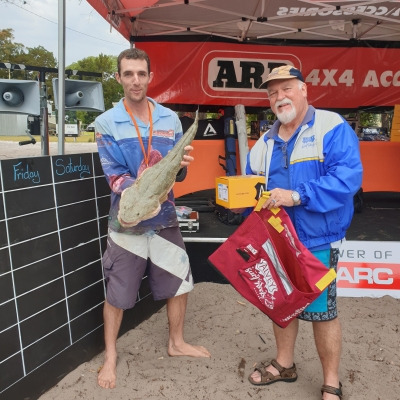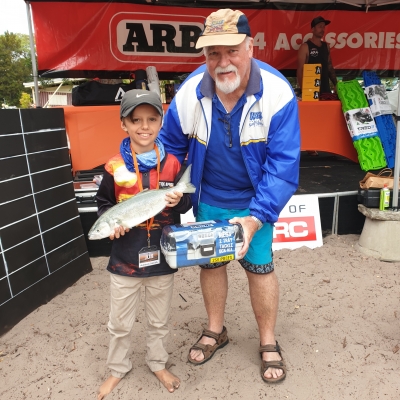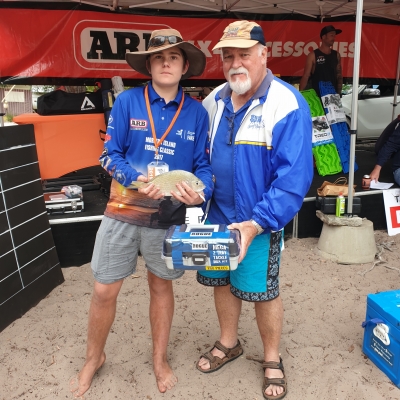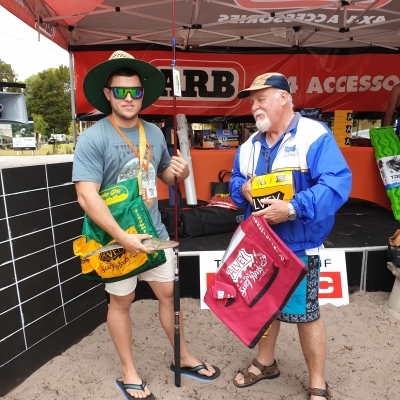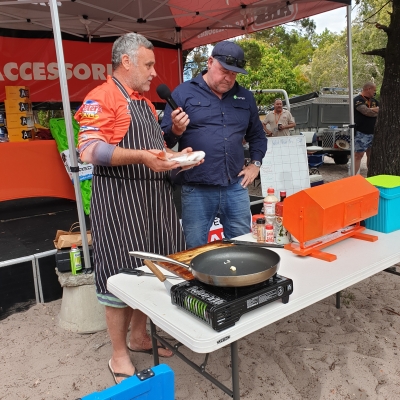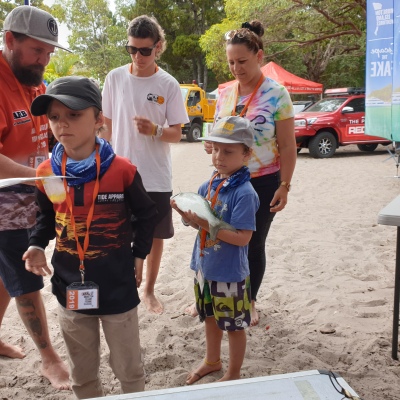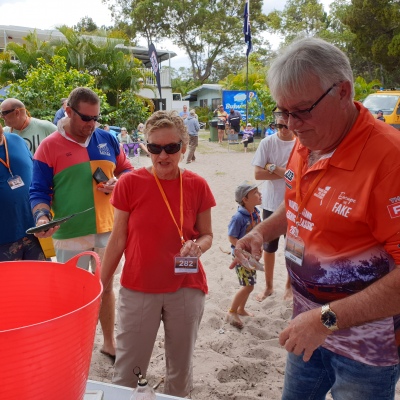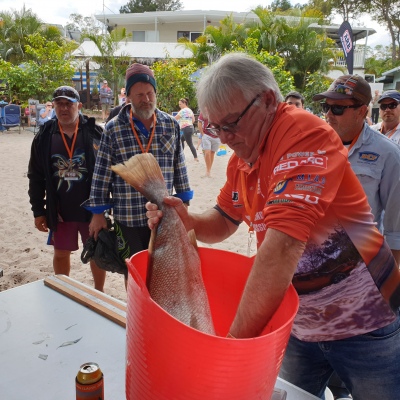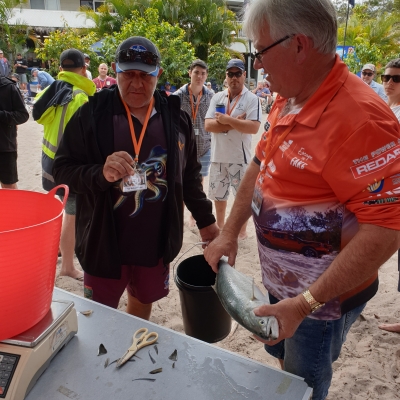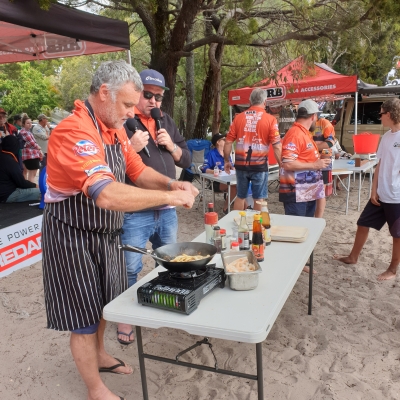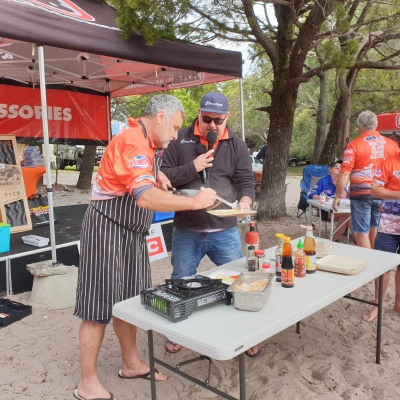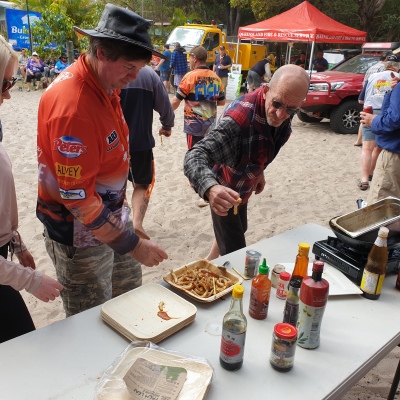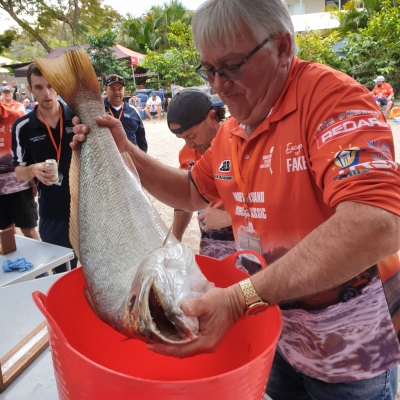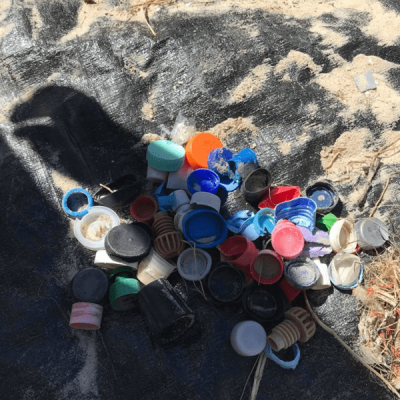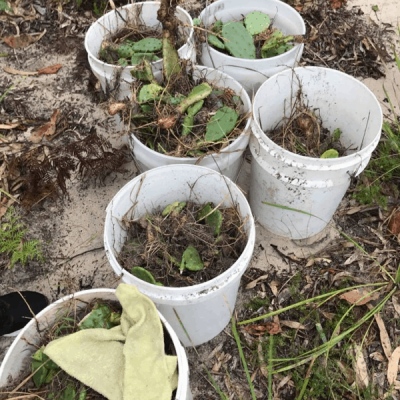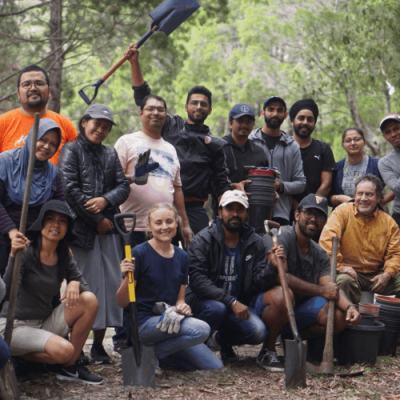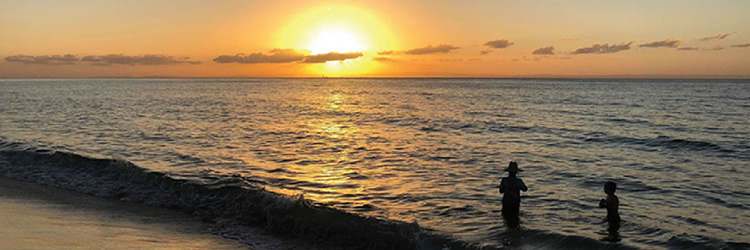
Magical Moreton Island holiday
Author: Lachie Baker
Publisher: Bush N Beach
FIRST, can someone please tell me how time is going so fast? Christmas holidays are over and it’s back to work and school for everyone, with 2019 in full swing. Bad weather over the majority of the holiday period meant my offshore fishing was limited to one trip where smokings and bite-offs plagued us all day. In the end we managed to put a couple of nice squire in the box but really it was quite tough. Moreton Bay, however, has been fishing well for grass sweetlip, squire and cod. Offerings such as squid and pillies as well as small micro jigs have worked well. Mackerel haven’t really turned up in force yet, but after witnessing first-hand the amount of bait in the northern area of the bay, my guess is they aren’t too far away. In a lot of my articles I talk about how fortunate we are to have access to great fishing right on our Brisbane doorstep, but I have also discovered the amazing camping and offroad options that present themselves too. I recently spent a week camping on Moreton Island with close family friends, and this place proved exceptional for all three of the above options. The trip began by packing our Ford Ranger to the absolute rafters. There was literally no room for an extra chip packet. We had swags, gazebos,
tents, mattresses, tables, barbecues, eskies and fishing gear. Usually, whenever my family goes on a trip the majority of stuff is packed in the boat, but as it was my first time properly driving on the beach, the Bulldog stayed in the shed at home. It was a tight squeeze but we just managed to get everything in. The following morning was a Wednesday and we were booked on the 6am barge, so we got up at 3.30am, placed the last of the cold food in the Esky and set off around 4am. We arrived at the Port of Brisbane service station, met with our convoy and headed to the barge. We boarded Micat just after 5am and headed upstairs after letting our tyres down to about 18psi. We crossed a glassy calm Moreton Bay and arrived at the Tangalooma landing right on schedule.
Apart from excitement, there isn’t a word to describe the feeling you get as the ramp drops to reveal giant sand dunes and crystal-clear water.
Apart from excitement, there isn’t a word to describe the feeling you get as the ramp drops to reveal giant sand dunes and crystal-clear water. We left about five minutes after our convoy due to the positioning of the cars on the barge, but everyone driving off was being stopped by police for a quick breathalyser test and beach driving permit check. We didn’t get far before we ran into our mate Jason and his family, as they were bogged deep from the weight of the caravan on the back of his LandCruiser ute. Once we had the recovery sorted, we found the perfect spot to camp. We set up right at Cowan Point beside my good mate Tony Dummer, who had already spent two weeks on the island. After camp was set up, we ripped the Sea Jay 3.5 Nomad tinnie off the roof of the truck, rigged our rods and launched off the beach straight out the front of camp. We headed for the closest shipping channel beacons to see if we could spin up a few mackerel.
We found heaps of bait and good fish showing on the sounder, so I was quietly confident we might catch one or two. It didn’t take long for my mate Liam to hook up to what looked like a solid fish. After about 10 seconds of fighting, he pulled the hook and had an epic dummy spit, much to my amusement. We kept fishing and mucking around but the n a breeze came in and the conditions worsened, so we ran back in to the beach empty handed. I didn’t want to get caught out in bad weather in an 11’ boat. We took it pretty easy the following day, chilling around camp for most of the day and going for a quick run up to the Bulwer shops to pick up a few things.
It was good for me to have my first crack at driving a few tracks, as this year my old man couldn’t make it over due to work commitments, so I was designated driver for my mum and sister. I found the tracks a lot easier than expected, so had a lot of fun following the other boys all over the island. Once we got back to camp, we got dinner going. Soon we decided to soak a bait out the front of camp to see if we could tempt one of the resident shovel nose rays for a bit of fun on light gear. Sure enough, young Liam hooked up and began the fight in front of a large audience of about eight families from our group.
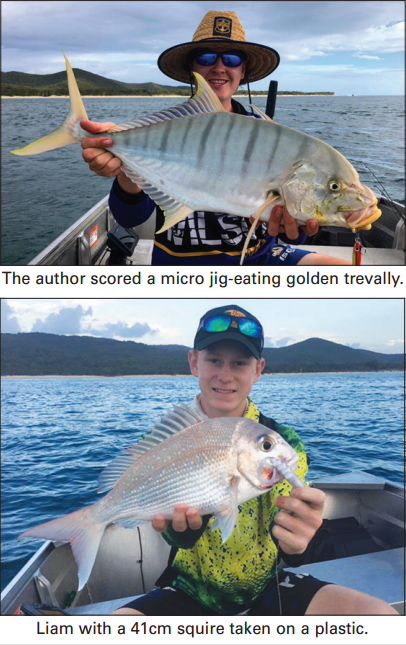
A few videos were taken and some of the drunken commentary that was recorded was hilarious. We eventually dragged the ray up the beach, shook the hook out, took a quick photo and sent it on its way. All the kids at the campsite soon returned with their own fishing rods in the hope of catching the huge ‘great white’ they had just seen. We didn’t hang around for much longer because it was getting quite late, so made plans to take the tinnie out in the morning. These plans were cancelled once we awoke to rain and wind the next morning, but the showers cleared quick enough for us to take a trip up to the Champagne Pools and North Point with the rest of our extended group. The track in was rough and soft but a lot of fun until I began to hear an awful noise coming from the front driver’s side wheel. Once we got to the beach we jacked the car up and rattle gunned the wheel off because I was worried I might have damaged something but it turned out it was just a small rock jammed between the disk and backing plate – easy fix. Problem solved, we went for a flick off the rocks. The incredible scenery at this end of the island never ceases to amaze me. It almost makes the bad feeling of catching no fish go away. We hung around for a bit longer, and once everyone felt like lunch we all made our way back to camp. After lunch, we set the tinnie up, threw the rods in and took off once again. Instead of going out to the beacons, I decided to try something else. We hugged the beach and ran up to Curtin Artificial Reef. I had never fished there before, so began sounding around for something to drop on. It didn’t take long to find a massive bait ball with big fish hanging around it. I dropped a 30g micro jig and hooked up almost instantly. I was running 20lb braid on a 4000-size reel and struggled to budge this fish off the bottom. Straight away I called it for either a jewfish or big snapper because I could feel what I thought were big headshakes and powerful runs behind a fair bit of weight.
But once I had it off the bottom and it kept fighting hard, I quietly thought it felt like a big golden trevally. Sure enough, a bright yellow tail and golden fins appeared about 5m under the boat, and it wasn’t alone. Another golden of 80-90cm had followed it up from the bottom, but we didn’t try to get a double, simply focusing on landing the one we had already hooked. This proved to be quite a challenge without a net because the fish was still green and wanted no part of coming into the boat. Eventually, Liam got a hold of its tail and swung it into the boat and we were bloody stoked! The brag mat showed it to be 70cm on the dot, and after a few quick pics the fish was back in the drink kicking off. We went around for another drift and I hooked up again, this time to a chunky goldspotted cod of 45cm, which was very lucky it didn’t come back to camp for the hot coals that night. We were almost at the end of our drift when Liam said he was snagged, except it turned out he wasn’t snagged and was instead connected to a monster. It felt the hooks and smoked off along the bottom, nearly spooling Liam on its first run. I started the outboard and chased it down until it started coming up the water column and a massive cobia surfaced about 100m away. It was so big I thought it may have been a shark until I saw its white underbelly and distinctive tail. We both got a good look at it before it smoked off again, straight down to the bottom and into the reef. Ping went the line and “f***!” went Liam and I. By this stage it was getting late in the afternoon, so we decided it was time for a feed and home we went. I had a classic stacker out of the boat when retrieving it up the beach, which sent everyone into hysterics – I’ll even admit it was good laughing at my own expense. We were treated to another cracking sunset over the bay and we all agreed the day had been awesome. We finished off the night keeping well hydrated while listening to classic tunes from decades gone by.
There may or may not have been some boot scootin’ and yee-hawin’ to a bit of Lee Kernaghan, but I don’t think we should discuss that in this article. The following few days were a blur of four-wheel driving, fishing, beer drinking and fun in the sun. My old man brought over his bigger Sea Jay on a day off work and spent the day in camp. I took the opportunity to take a young fella from camp out to try to catch him his first fish, and we succeeded in the form of a 30cm coral cod, which he was stoked about. There’s something about helping someone catch their first fish that makes me feel a sense of achievement, knowing it could be the start of an obsession similar to mine. We mucked around for a bit longer, and apart from seeing a kingy bash some bait up but not eat a plastic there wasn’t much action. We headed back to camp, where all the kids were keen on going for a ride in the big Sea Jay. After burning around for a bit, it was time to say goodbye to my old man and my younger sister who was a bit over the whole camping situation. It was hard going back to the tinnie after fishing out of the big boat with a Minn Kota iPilot and side-imaging sounder but we had to make do with what we had. A few more fishing trips accounted for a couple of squire and another coral cod, but all things considered it was very quiet.
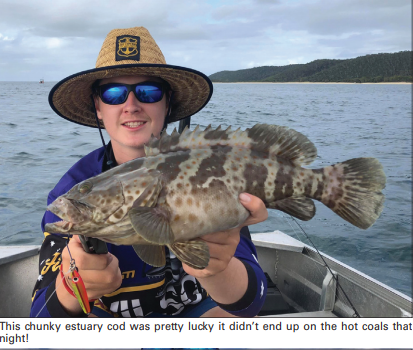

One of the other boys at our camp hooked another big shovelnose off the beach but couldn’t manage to get it up the bank. We did another day trip, this time heading down to Kooringal and back around the Sandhills. We visited the iconic Gutter Bar and had a good feed of seafood and chips, then climbed the Sandhills before spending the arvo at Tangalooma. Unfortunately it was our last afternoon on the island because we had to go back to work and reality the following day. The next morning dawned and I was filled with sadness. How on earth can a week pass so quickly? I began pulling down my swag as well as the gazebo and all the tables. I had no idea that packup was such a depressing time. We went for one last drive up to the Bulwer shop before coming back, saying goodbye to everyone and parking at Tangalooma to wait for the 3.30pm barge. Just like that, our trip had come to an end. I have travelled to locations such as Hinchinbrook Island, Rockhampton and Turkey Beach in the pursuit of fish and the enjoyment they bring to me, but it was so relaxing just visiting a location right on our doorstep. I am already counting down the days until I go back. Hopefully the coming months see the return of our Moreton Bay pelagics, as I’m itching to get into a bit of surface action on speedsters such as longtail tuna and spotted mackerel.
Until next time, tight lines and sore arms.
